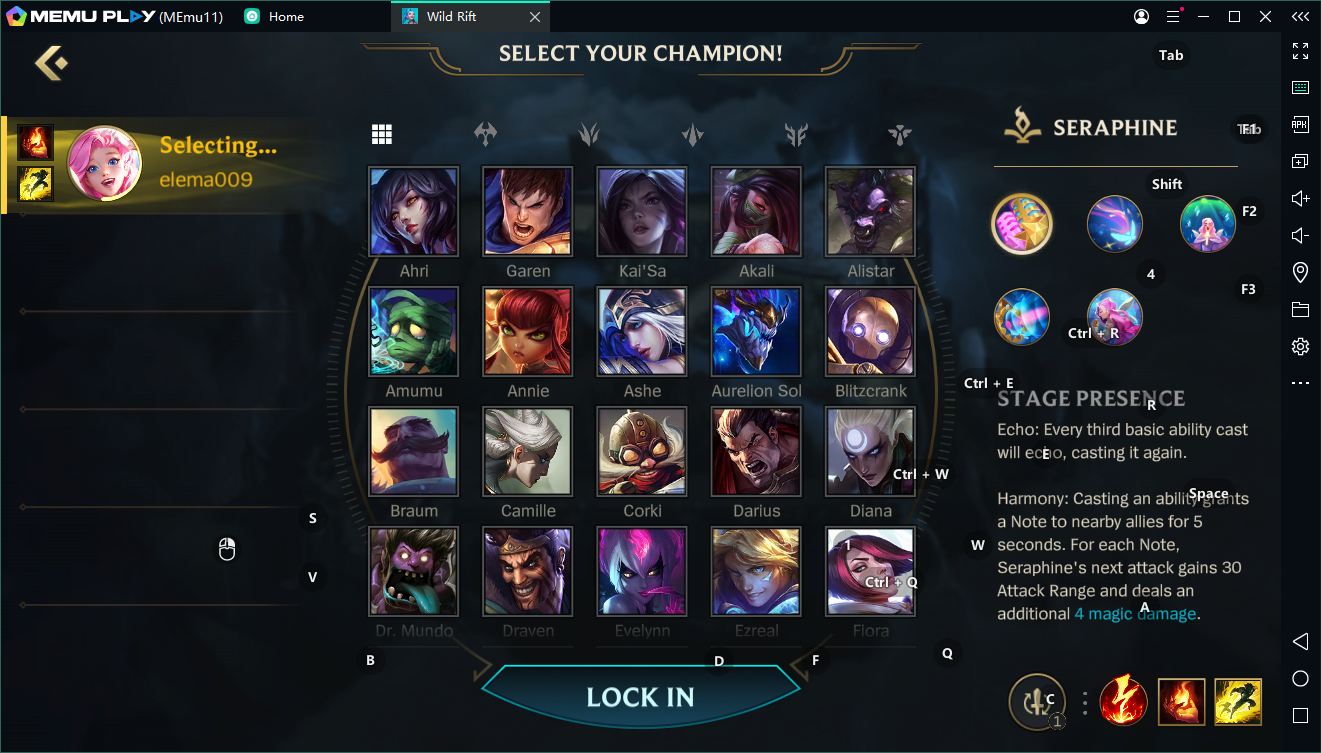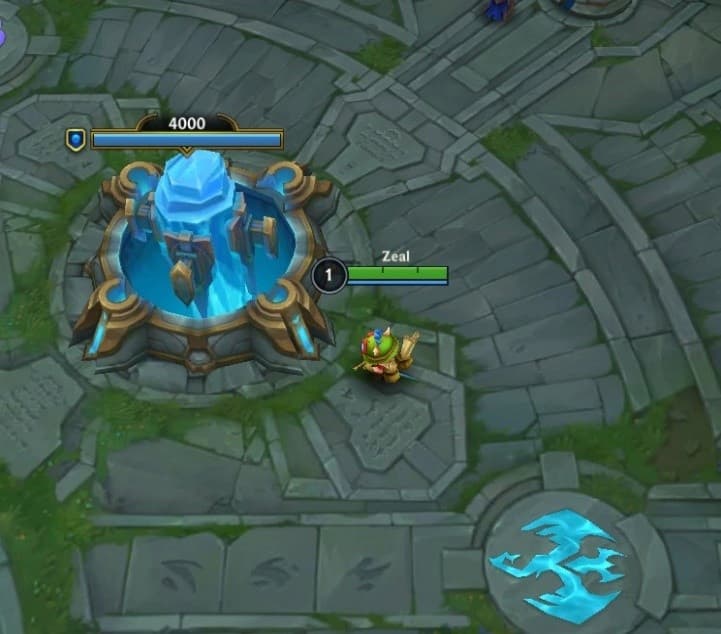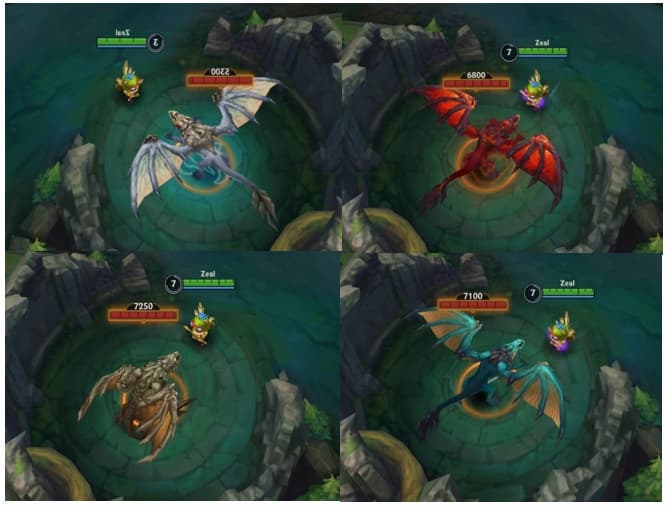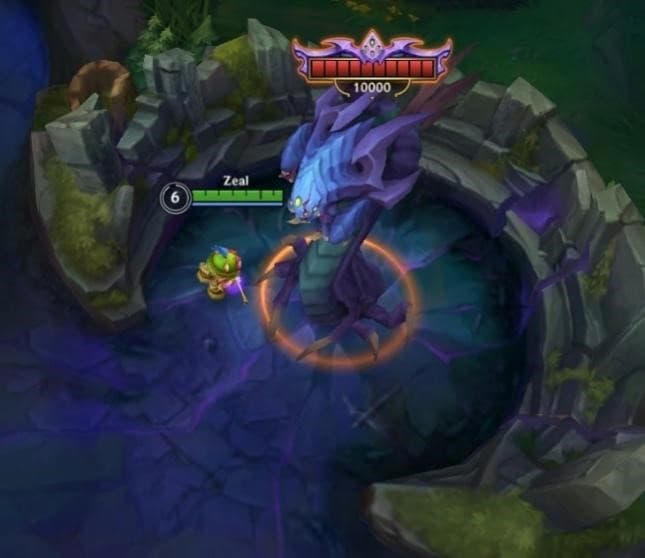League of Legends: Wild Rift is a revised version of the world-famous game, known for its rich lore, fun-filled strategy-packed team game, and a strong and competitive pro scene. It features the action-packed 5 v 5 MOBA action with the map being smaller, dual joystick controls, and short games. The goal of this Map guide is to inform you of the new Wild Rift map and its contents in a straight-forward way. After reading the guide, you should have a better understanding of how the game works and how to win it. After reading it all, you won’t miss anything!

Before we get into the Wild Rift
Before games begin, each player can group or play with strangers in a match, then grouped into 2 teams of 10 total players. Afterward, players will each select a character of their choice called a champion to play for the match. Lastly, the 2 teams are then will fight against each other: after the game, there is 1 team that is victorious and 1 is defeated. The team must work together to defeat the opposing team.
The Wild Rift Map Guide

Games take place on the Wild Rift. Each team has a base that they must guard against the opposing team while simultaneously attacking the opposing team’s base. There is a total of 3 lanes, which champions go to push through the opposing team’s base. There is also a jungle where monsters that give benefits to your champion reside (which will be discussed in another section of the guide). Everything on your team’s side of the map is mirrored to the opposing team’s.
Nexus

The Nexus can be located at the back of each team’s base. You win the game by destroying the one on the opposing team’s base, and your team needs to prevent the enemy from destroying yours.
Turrets

There are a total of 9 turrets that guards the Nexus. These turrets attack any enemy within its limited range. A turret is stronger the closer it is to The Nexus (describe via tiers). Destroying these turrets will now enable to destroy the Nexus itself.
The Lanes

As mentioned earlier, there is a total of 3 lanes that extend each base: Baron Lane, the Mid Lane, and the Dragon Lane.
Baron Lane
Baron Lane is closer to Baron Nashor (a jungle monster) thus the name. Champions with high survivability, high damages, or engage traditionally go to this lane. Baron Laners are usually isolated off from the rest of the team and games could go on for quite some time, before they group with the rest of the team.
Mid Lane
The Mid Lane is the shortest. Champions with very high damage output traditionally go this lane. Mid Laners are often thought of as the star role of the team for they are in the middle of everything, they can go to any point of the map to assist their teammates. Mid lane champions are usually one of the team’s two main damage dealers and usually rely on abilities rather than their auto-attacks.
Dragon Lane
The Dragon Lane is closer to the Dragon (a jungle monster) thus the name. 2 champions traditionally go to this lane:
- The Carry (usually a marksman but can also be a mage) is usually one of the team’s two main damage dealers and usually rely on auto-attacks more than their abilities unlike Mid Laners, and the Carry provides the most value later the game.
- The Support helps the Carry throughout the game. While the support helps the Carry early on the game, as the game moves forward, they usually transition into helping the whole team. Support Champions usually do not deal a lot of damage but have incredible abilities that help the team in many situations.
Minions
Minions spawn from each team’s Nexus every few seconds and march down the lanes. They will attack anything in their path, including opposing champions, opposing minions, and opposing structures such as turrets or the Nexus itself.

Minions can be killed by opposing team’s minions or opposing champions. Without interference from champions, they will push against each other indefinitely. Also, minions provide resources that make champions stronger. Destroying the Inner Turret or the Tier 3 turret will make your team spawn Super Minions depending on what lane the turret is destroyed. These Super Minions will push against other minions faster and deals more damage to structures and champions.

Teams must use their minions to push the lanes, destroy the Tier 1 Turret, Tier 2 Turret, Tier 3 Turret, and the Nexus itself to win the game.
The Jungle
The jungle is space between the lanes that you see on the map (see photo attached on The Lanes section). In the jungle, there are a lot of walls and narrow paths. Inside the jungle are camps which are jungle monsters. These monsters can be killed by any member of either team, but they are much harder to kill than minions.
From the very center of Baron Lane extending to the very center of the Dragon Lane, there is a river running through the map (which is what Teemo is standing on). The river divides the map into two sides: your team’s jungle and the opposing team’s jungle. Just like structures, these jungles mirror each other.

A certain role also goes to the jungle, called a Jungler which roams around the jungle for the beginning of the game killing monsters. They are special because of Smite, a summoner spell that enables the user to call down a bolt from the sky to deal damage to monsters. In between killing monsters, junglers can help a teammate, usually trying to kill their opponent turning a 1 v 1 on Baron Lane to a 2 v 1 for example. Also, junglers are very important for they are key to securing the more important objectives later in the game, which will be discussed further in this Wild Rift Map guide.
Jungle Monsters
Every jungle camp has unique traits. These camps make champions stronger based on how hard they are to kill and are essential to a jungler.
1. Buffless Monsters

These monsters give similar resources which are only gold and experience. However, these camps have different traits like the Krugs for example which splits into smaller units before dying completely, and the frog-like Gromp which attacks become slower the longer you fight it which makes the other camp harder to finish than the other.
2. Red Buff and Blue Buff

These monsters are grouped because they give similar resources which, besides gold and experience, give buffs which is a status effect that can benefit almost any attribute of a character such as health, mana, and damage. These monsters have similar strengths and are vital in the early phases of the game. A Brambleback gives a buff that not only increases your offensive stats but also makes your auto-attacks burn the target, while the a Sentinel gives immense resource regeneration.
3. Dragons

Four different Dragons will all spawn in random order. Each dragon provides unique permanent buffs to the team that kills it. Dragons are in the curcular arena in the river. Compared to the other jungle camps that are mirrored, this camp is not. Teams will usually group to kill this objective since it provides high value. The 4th dragon that spawns is an Elder Dragon which provides a stronger buff that includes a permanent burn to your attacks and abilities but is much difficult to kill due to its high damage and health. Upon killing the 4th dragon, none will spawn anymore.
4. Rift Herald

This purple crab-like monster can be located across the river from where the Dragons are, in a similar circular arena. The Rift Herald is weaker compared to the Dragon and can be taken by the jungler alone by hitting its eye (not on its face, but on its back). Defeating the Rift Herald drops the Eye of the Herald. The holder will recall faster back to the base until used. Using the Eye of the Herald will summon the Rift Herald making it fight for the team that summons it. It will then attack opposing minions and deal huge damage to opposing turrets until it is killed again.
5. Baron Nashor

10 minutes into the game, the gigantic worm-like Baron Nashor, spawns in the same place that the Rift Herald resides. It is the strongest and toughest monster to defeat in the game. Similar to the Dragons, killing Baron is a team-effort, but yields worthwhile rewards. Defeating Baron will give all members of the team that killed it a boost for a period of time, which increases their offensive stats, makes their recalls faster, and empower nearby minions.
Since the buffs given by Baron and the Elemental Dragons are all given to the team who lands the killing blow, securing the kill with Smite is crucial to success. Oftentimes, junglers will risk their lives to secure these objectives, thus the reason why they are very important.
Plants
Besides the trees, grasses, and flowers that you can see across the Rift. There are also notable plants that you can interact with within the game. Each has its different purpose to help the players. These plants may seem small and insignificant, but they contribute a lot to how the games progress all-in-all.
Blast Cone

There is a total of 4 of these red cones in the Rift, all located in the jungle surrounded by walls. The purpose of these plants is simple. When it is attacked, anything around it blasts off, thus the name. With these plants, you can jump through the walls near it or just travel a distance to escape or chase your opponents. Though they can be tricky, knowing where you will fly to when attacking and utilizing it the right way consistently will greatly affect your games. So be sure to practice it in the Rift!
Brush

These plants are all over the Rift and their purpose is straightforward. When you enter brushes, you will become unseen from anyone outside. Upon entering brushes, your champion will slightly look transparent. Though there is a way to see units inside the brush without entering it (will be mentioned shortly). These brushes distribute largely on how the games progress since they can be manipulated in many ways to make plays and control the map, that is why using it correctly is a high-universal skill especially in high levels of Wild Rift play.
Honeyfruit

These green semi-aquatic-looking plants can be found in the river and in the lanes and contribute a lot to the games. Their purpose is quite simple, they heal you and regenerate your mana. Just like blast cones, these plants can be triggered by attacking them. However, they only spawn once every while so making your opponents use theirs earlier than you use yours is an advantage. There are times where you are about to die, and these plants just come in handy and right on time to save you. That’s right, even in this game, plants can be lifesavers!
Scryer’s Bloom

These magical plants are found all near the river and their purpose is to give vision (will be mentioned in the guide shortly). Just like blast cones and honeyfruits, they can be triggered by getting attacked. Before getting attacked, these plants display a range indicator on what location and direction it will reveal.
Vision (Fog of War)
Games will be too easy when you can see everything on the map, thus the Fog of War or just FoW in short. Every unit and structure on the game including the turrets, champions, and minions has its own range of sight, which reveals an area on the FoW around them. Though, the vision that units reveal can be blocked by terrains and walls around the map. Fog of War plays a huge role in the game and just like brushes, it is a high-universal skill that should be manipulated especially in high-level play.
However, there are things to reveal vision besides units, one is already mentioned earlier in the guide, the scryer’s bloom plant. Another one is through the use of a Ward.
Wards

The purpose of Wards is to reveal the Fog of War on an area around it and gives vision, which enables you to even see units inside brushes. Wards are free and refreshes in the fountain. Using where to effectively place the wards are what lowkey decides the games, that is why it is it is also another high-universal skill. They are generally invisible; however, scryer’s bloom reveals it as well as another trinket.
Sweeping Lens

Just like wards, the sweeping lens is a trinket. However, you can only choose one of the two trinkets at a time. The sweeper lens reveals anything invisible. However, unlike wards, it does not give vision but reveals units in the fog of war as silhouettes instead. They last a couple of seconds before going to a cooldown.
Conclusion
Thanks for reading and congratulations on reaching the end of the guide. Now, you’re ready to explore the Rift along with a variety of unique champions. In playing Wild Rift for the first time, you will have no idea what’s going on and why almost everyone wants to kill you (though that probably wouldn’t change), but you’ll eventually get used to it and actually enjoy the game.
While it can be rage-inducing and self-loathing, it is actually a good game if you stick at it, its fast-paced, intense, and challenging matches will eventually grow on you. Also, to mention the rather impressive service that Riot provides for the community including consistent updates and rewards.
Discover More about MEmu Play
League of Legends: Wild Rift